The Guardian
Monday 17 December 2018
The young art director’s idea to photograph as many of the luminaries of the New York jazz scene as possible together for Esquire’s 1959 Golden Age of Jazz edition began his career as a photographer. Police closed the road to all but residential traffic, and 57 musicians duly assembled in Harlem between Fifth and Madison Avenues. The group included Dizzy Gillespie, Art Blakey, Thelonius Monk, Coleman Hawkins, Lester Young, Charles Mingus, Gerry Mulligan and Count Basie.
Art Kane: Harlem 1958 is available at Wall of Sound Editions

(From left) Eddie Locke, Jay C Higginbotham, Charles Mingus, Ernie Wilkins, Bill Crump. ‘ Eddie Locke told me he rounded the corner of 126th Street … and nearly fainted. The giants of jazz! His heroes. Right there! Basie, Dizzy, Monk, Pres, The Hawk, Blakey, Joe Jones and on and on. Knees knocking, he said he almost fled … not feeling like he belonged in that gathering of titans. But then he spotted another young lion, Horace Silver, who he had gigged with, so he made his way over and stood with his friend, taking his place in that historic moment’ –Jonathan Kane (Art’s son)

(From left) Eddie Locke, Jay C Higginbotham, Charles Mingus, Ernie Wilkins, Bill Crump. ‘ Eddie Locke told me he rounded the corner of 126th Street … and nearly fainted. The giants of jazz! His heroes. Right there! Basie, Dizzy, Monk, Pres, The Hawk, Blakey, Joe Jones and on and on. Knees knocking, he said he almost fled … not feeling like he belonged in that gathering of titans. But then he spotted another young lion, Horace Silver, who he had gigged with, so he made his way over and stood with his friend, taking his place in that historic moment’ –Jonathan Kane (Art’s son)
Front row, from left: Marian McPartland, Lawrence Brown, Emmett Berry, Mary Lou Williams (turned back to the camera), Vic Dickenson, Thelonious Monk. Top left, Oscar Pettiford
From left; Benny Golson, Sonny Rollins, Thelonious Monk. ‘ There was going to be an unusual shooting of a photograph for Esquire Magazine and I was being invited to be a part of it. I couldn’t believe it! Nobody really knew me that early in my career. But zippo, I was there on the intended date. When I arrived, there were all of my heroes’ – Benny Golson
‘I have no idea how they decided to stand where they did, and with whom, but they did. Slowly they formed themselves into a big group … and I saw they couldn’t have got themselves into a better position’ –Art Kane
Count Basie’s hat was repeatedly stolen by local kids until Kane surrendered and put them in the shot too. ‘ So here you have a non-professional photographer, who’s got an assistant who’s never loaded a camera before, taking this picture which 30 years later is probably the best-known group photograph ever taken if jazz musicians’ – Art Kane

Art Kane: Harlem 1958 – the 60th anniversary edition
Foreword text by Quincy Jones and Benny Golson, Introduction by Jonathan Kane, original text by Art Kane. Published 12 November 2018 by Wall of Sound Editions

The individual Esquire jazz portraits were included in the Golden Age of Jazz essay that featured Harlem 1958 as the centrepiece. Kane’s vision for his photo of Louis Armstrong was of a genius taking a rest from the musical revolution he had started. He flew Armstrong from Las Vegas to a location in Death Valley, to remove him from his usual environments. He wanted Armstrong seated in a rocking chair such as he had made famous in the hit song. He asked Armstrong to put his trumpet down, and the setting sun aligned with Armstrong’s eye
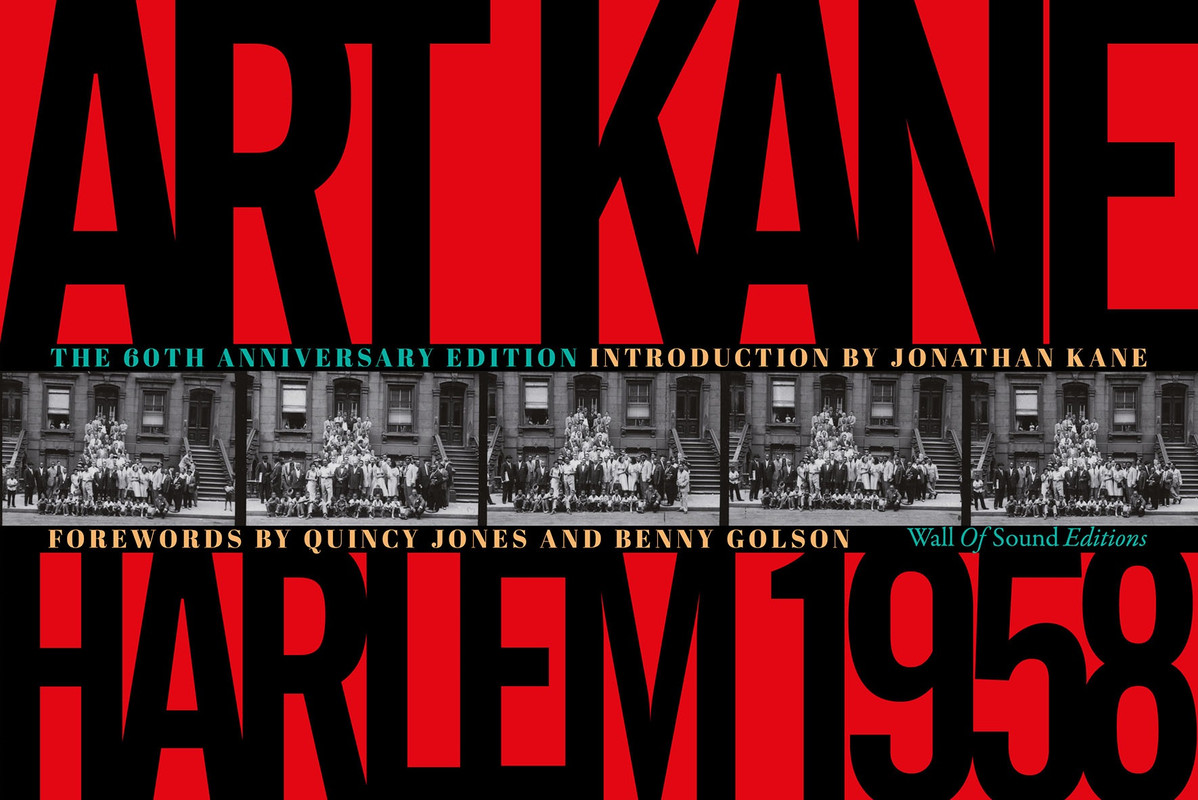
“ART KANE. HARLEM 1958”
“I cannot envision a more beautiful parallel for jazz and art in general; in the moment, you may not realize the impact that you have through your creations, but as this photo demonstrates, the effect and significance will outlast any lifetime. Not only is this photo important to the people in it, but it should be a reminder of where we need to be: together.” Quincy Jones
ART KANE. HARLEM 1958 marks the 60th anniversary of one of the most celebrated images in American history. Now commonly known as A Great Day in Harlem, the famous shot of 57 jazz musicians gathered outside a brownstone in New York is one of the most imitated images in popular culture, by one of the world’s greatest photographers.
ART KANE. HARLEM 1958 is a visual history of an iconic image including, for the first time, virtually every single frame from the historic shoot. With original text by Art Kane, forewords by Quincy Jones, the legendary Benny Golson, who appears in the photo, and an introduction by Kane's son, musician and photographer Jonathan Kane, the 168-page hardback volume is the story behind the shot.
“I came up with the idea of getting as many musicians together in one place as we could. It would be sort of a graduation photo or class picture of all the jazz musicians. After I thought about it some more I decided they should get together in Harlem. After all, that’s where jazz started when it came to New York.” Art Kane
In 1958 fledgling photographer Art Kane pitched the idea to Esquire - invite the musicians of New York’s jazz community to come together for one photo. Esquire agreed and Kane sent requests via agents, record labels, managers, clubs, anywhere he could spread the word. “There was going to be an unusual shooting of a photograph for Esquire Magazine and I was being invited to be a part of it. I couldn't believe it! Nobody really knew me that early in my career. But zippo, I was there on the intended date. When I arrived, there were all of my heroes.”Benny Golson
57 jazz musicians, from the unknown to the world famous, duly assembled at the unlikely hour of 10am at 17 East 126th Street, between Fifth and Madison Avenues. The group would include Dizzy Gillespie, Art Blakey, Thelonius Monk, Coleman Hawkins, Lester Young, Charles Mingus, Gerry Mulligan, Count Basie - whose hat was repeatedly stolen by local kids until Kane surrendered and put them in the shot, too. Esquire magazine published the photo in its January 1959 Golden Age of Jazz special issue, along with a series of Art Kane’s portraits of other jazz giants including Louis Armstrong, Duke Ellington, Lester Young and his famous shot of Charlie Parker's grave. These portraits are also included in the book, with outtakes and other jazz-related images of gospel groups and a young Aretha Franklin, and on set photography of the film "Pete Kelley's Blues”.
“Black and white: two colors forbidden to be in close proximity, yet captured so beautifully within a single black and white frame. The importance of this photo transcends time and location, leaving it to become not only a symbolic piece of art, but a piece of history. During a time in which segregation was very much still a part of our everyday lives, and in a world that often pointed out our differences instead of celebrating our similarities, there was something so special and pure about gathering 57 individuals together, in the name of jazz.” Quincy Jones
Released in November 2018 by Wall of Sound Editions, ART KANE. HARLEM 1958 honors a pivotal moment in American history through the work of one of its most celebrated photographic voices. The launch of the book will be accompanied by a series of events and exhibitions in New York, Los Angeles, London and in Italy.
https://www.wallofsoundgallery.com/en/art-kane/
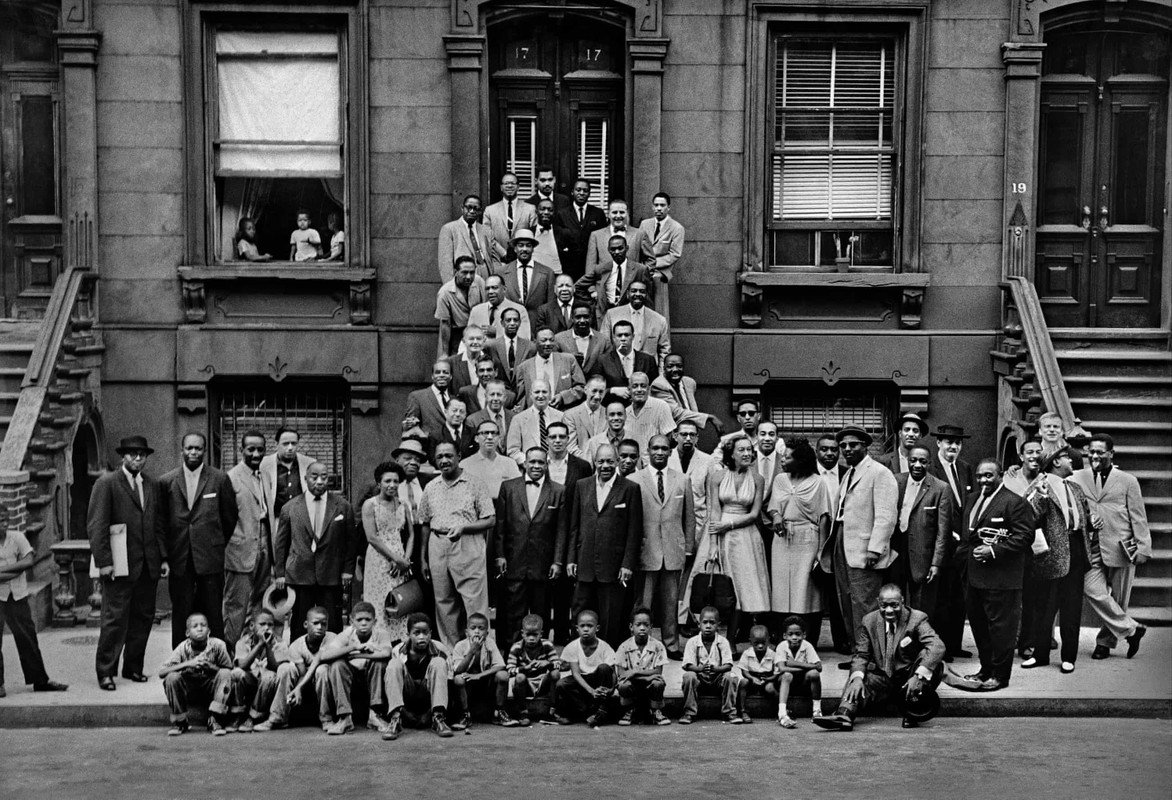

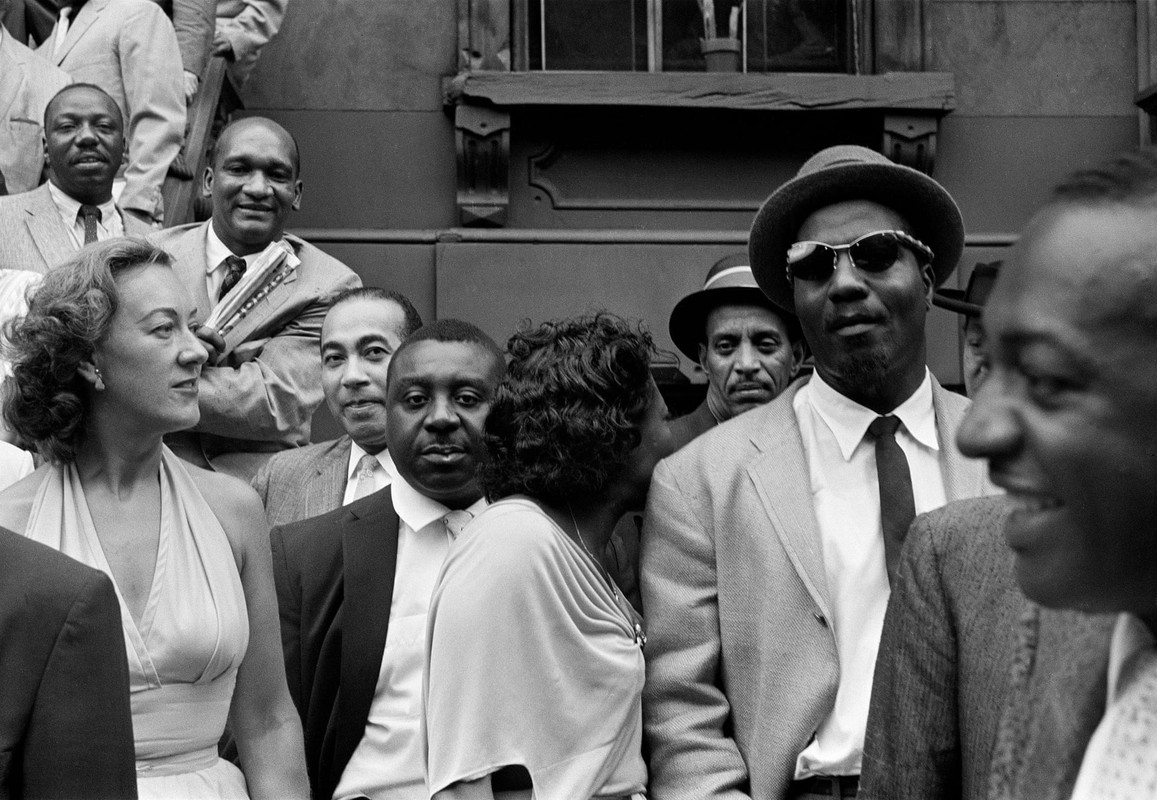


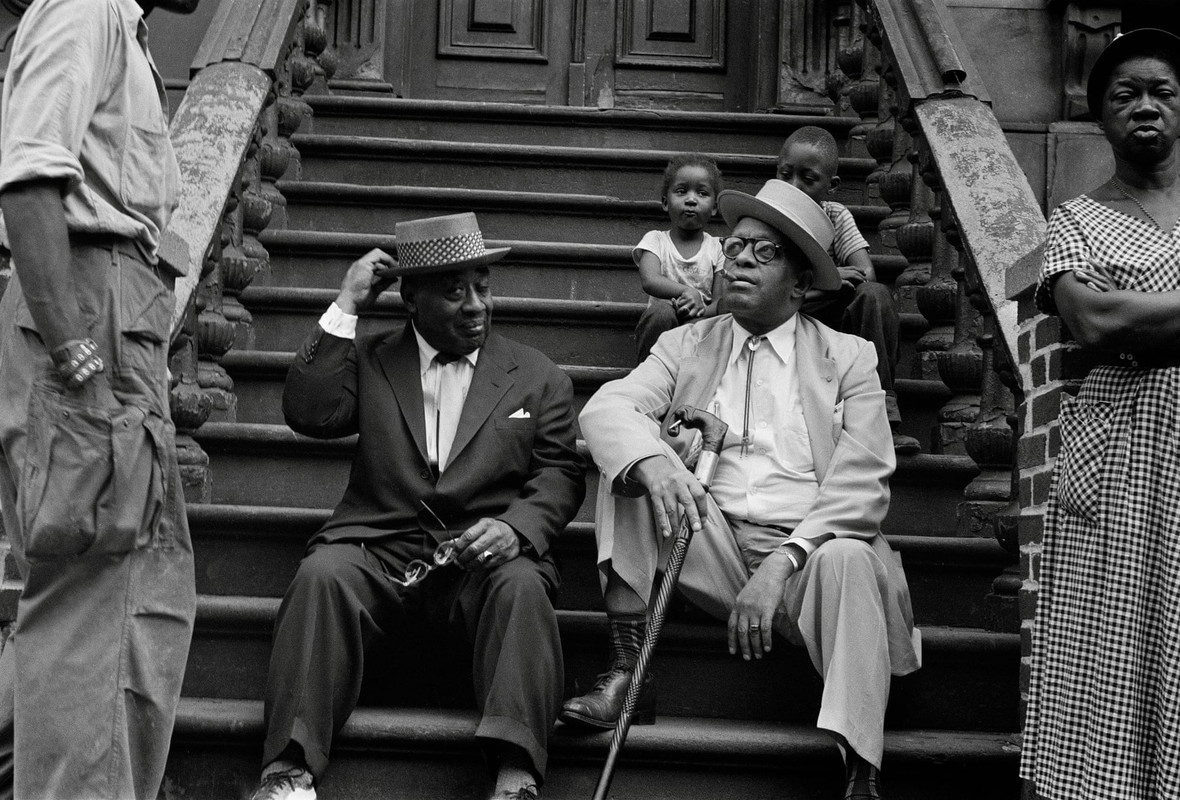
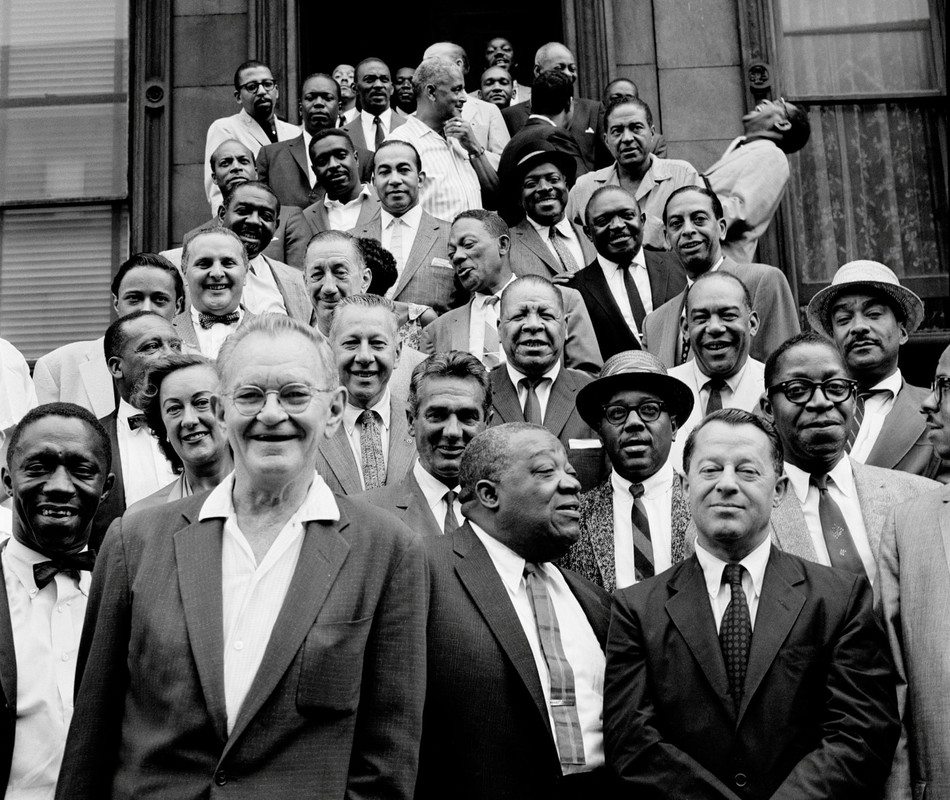












No comments:
Post a Comment